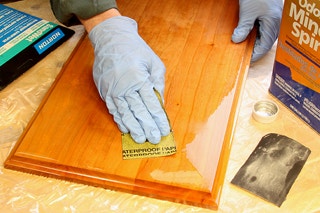How to Avoid or Repair Sanding Marks
I repair and restore antique pieces. If necessary, I sand off the old finish rather than stripping. I like using my orbital sander, but have trouble with chatter marks. Any suggestions?
Tim Inman: By "chatter marks" I'm going to assume you mean what I usually call "swirlies": little machine made marks left by sandpaper/abrasive scratches. Every tool leaves its own mark. A random orbital sander is less prone to leaving the very easily seen "swirlie" marks on wood; an ordinary orbital is more likely to leave them. Straight-line or "in-line" sanders also leave marks, but they are linear rather than circular. So what to do? My best advice, which I recommend in my book, is this: Do the sanding with your favorite machine. Work your way down through the necessary grits from coarser to finer. When you have finished the job with your power tool, then use this trick: Whatever grit you stopped with on your sander, for example 220, go backwards one grit. In this case, that would be 180 in my shop. Now, re-sand by hand. Go with the grain, and do a nice job, but don't work yourself into a frenzy. Pay more attention to flat surfaces that are the most likely to show swirlie flaws. Now you have "hand sanding" marks on your furniture. I find that this technique virtually eliminates the machine-made scratches. Your manmade ones are not very visible in the finished job.
Now, about sanding the finish off antique pieces: don't. Sanding not only removes the finish, it also removes the wood surface that has the patina so cherished in an antique. It also cuts off sharp molding edges and surface elements that are so strongly deserving of preservation. Usually, an appropriate chemical cleaning is much less destructive of the surface - when finish removal is absolutely needed.
Chris Marshall: After final sanding by hand, I will also flood on some mineral spirits or denatured alcohol — it makes those remaining sanding scratches much easier to see, and neither solvent will raise the grain like water. Sometimes it really helps! One other word of advice: easy does it on the hand pressure on your sander. Bearing down on the machine may seem like a logical way to speed up the process, but it doesn't. It slows the tool down and leads to even more swirl marks. Use a light hand and let the sander's weight do the work.
Keep the inspiration coming!
Subscribe to our newsletter for more woodworking tips and tricks



